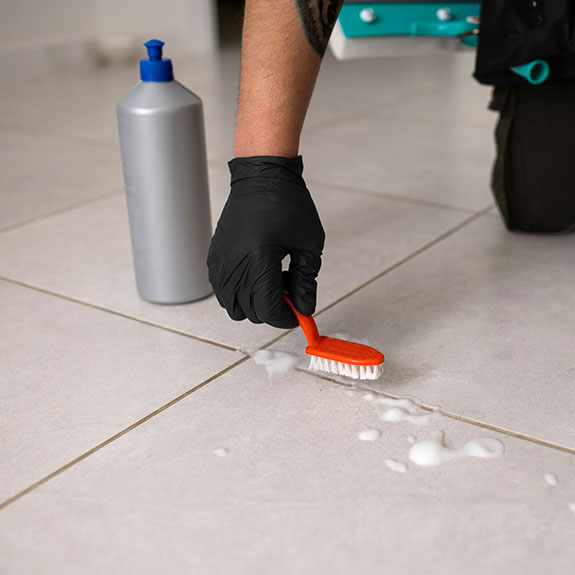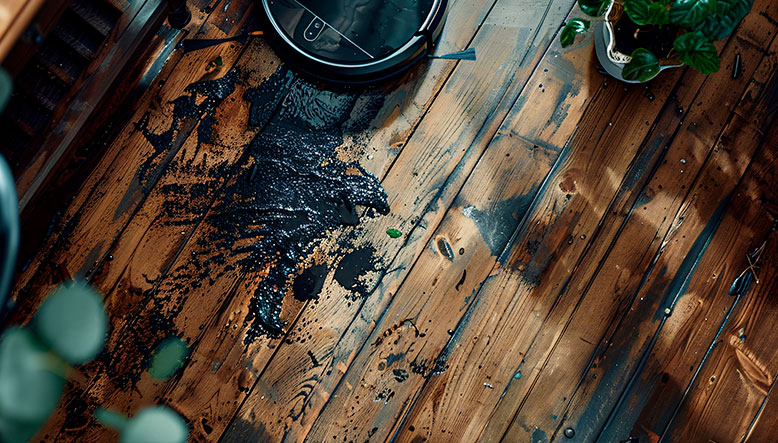Floor joints are those small areas that, while often unnoticed, play a crucial role in the appearance and upkeep of any space. However, over time, they tend to accumulate dirt, mildew and debris, which can give a neglected impression. The good news? Preventing this from happening isn’t complicated, it just requires some preventative care and good habits. In this article, we’ll show you how to keep your joints spotless, extending their lifespan and improving the aesthetics of your floors. If you are looking for quality materials or tools to take care of your joints, in Paratureforma you will find everything you need.
Why do floor joints get dirty?
Dirt in joints accumulates for several reasons. One of the main factors is constant exposure to moisture, which is common in areas such as kitchens and bathrooms, where conditions are conducive to mold growth . In addition, everyday debris, such as grease, dust or food debris, easily lodges in these small crevices. In areas with high traffic, such as living rooms or hallways, continuous use intensifies this problem. It is also important to note that not all joints react the same; for example, cement joints tend to be more porous and tend to absorb more dirt, while epoxy joints, although more resistant, need periodic cleaning to maintain their shine.
Initial preparation: know your soil and joints
Before taking preventive measures, it is essential to identify the type of floor and joints you have. This will determine the most appropriate products and methods for their care.
Differences between types of gaskets
- Cementitious: These are the most common, especially in ceramic floors. They usually require sealers to avoid stains.
- Epoxy: They are water and stain resistant, but require regular cleaning to maintain their appearance.
- Silicone: Flexible and resistant, but vulnerable to mildew in humid areas.
Identify accumulated dirt
- Dark stains: Indicate accumulation of grease or mold.
- Yellowish: It is usually due to hard water residues or poorly rinsed chemical products.
Preventive methods for maintaining clean joints
Preventing dirt buildup in floor joints is easier than it sounds if you follow these tips:
-
Adequate ventilation
Keep damp areas well ventilated by opening windows or using exhaust fans. Dry the floor promptly after showering or cleaning. -
Use of protective sealers
Apply a sealer specifically for cementitious or epoxy joints. This will prevent them from absorbing stains and make cleaning easier. Renew the sealant every 1-2 years to ensure its effectiveness. -
Regular cleaning
Sweep and mop floors at least once a week. Use mild products that do not wear out the joints.

At Paratureforma, you can find high quality sealants and ideal products to protect your floor joints and facilitate their maintenance.
Household products to prevent dirt accumulation
Natural remedies are an excellent option for keeping joints clean without resorting to harsh chemicals. Here are some alternatives:
-
Baking soda and vinegar
Mix 3 parts baking soda with 1 part water to form a paste. Apply to joints and spray vinegar. Clean with a soft brush. -
Lemon juice
Mix lemon juice with water and apply to the seals with a cloth. This method also eliminates bacteria and provides a fresh scent. -
Essential oils and water
Add a few drops of tea tree essential oil to a liter of water. This natural disinfectant prevents mildew.
Professional methods to protect floor joints
If you are looking for longer lasting results, consider professional options:
-
Specialty cleaners
Use products designed specifically for grout. By following the manufacturer’s instructions, you can remove stains and prevent future buildup. -
Joint sealers
Apply a clear sealer after cleaning. This creates a barrier that prevents water and dirt absorption.
At Paratureforma, you can purchase both specialized cleaners and sealers to prolong the life of your floor joints. In addition, we offer advice on how to use them to obtain the best results.
Weekly maintenance: quick routine to avoid accumulation
The key to preventing floor joints from getting dirty is to establish a simple, consistent routine. Start by sweeping or vacuuming the floor to remove dust and particles that may accumulate in the crevices. Then, scrub with a mild cleaning product, avoiding those that are too abrasive, as they can wear down the joints over time. Finally, dry the floor after cleaning, especially in damp areas, to prevent moisture from building up and creating mold and mildew. By following this simple habit, your joints will stay clean without much effort.
How to deal with small stains on joints
When you notice a stain on the joints, act immediately:
- Use baking soda and hydrogen peroxide: Apply the mixture on the stain and rub with a soft bristle brush.
- Avoid abrasive products: They can wear the gaskets and make them more prone to fouling.
In short, keeping your joints clean and in good condition is not complicated if you follow these tips and use the right products. Whether you opt for home remedies or professional solutions, in Paratureforma you can find everything you need to take care of your floors and keep your home impeccable. Start today to protect your joints and improve the aesthetics of your spaces!
How often should I clean the floor joints?
Ideally, a thorough cleaning should be performed every three months, although weekly maintenance is sufficient to prevent the accumulation of dirt.
What to do if the gaskets have persistent mold?
You can remove mildew by applying a mixture of water and diluted bleach, leaving it on for a few minutes before rinsing with clean water.
Is it better to use homemade or commercial products?
Both are effective depending on the situation. At-home products are ideal for regular maintenance, while commercial products are more effective against stubborn stains.
How long does a joint sealant last?
A properly applied sealer can last from one to three years, depending on the use and type of floor.


